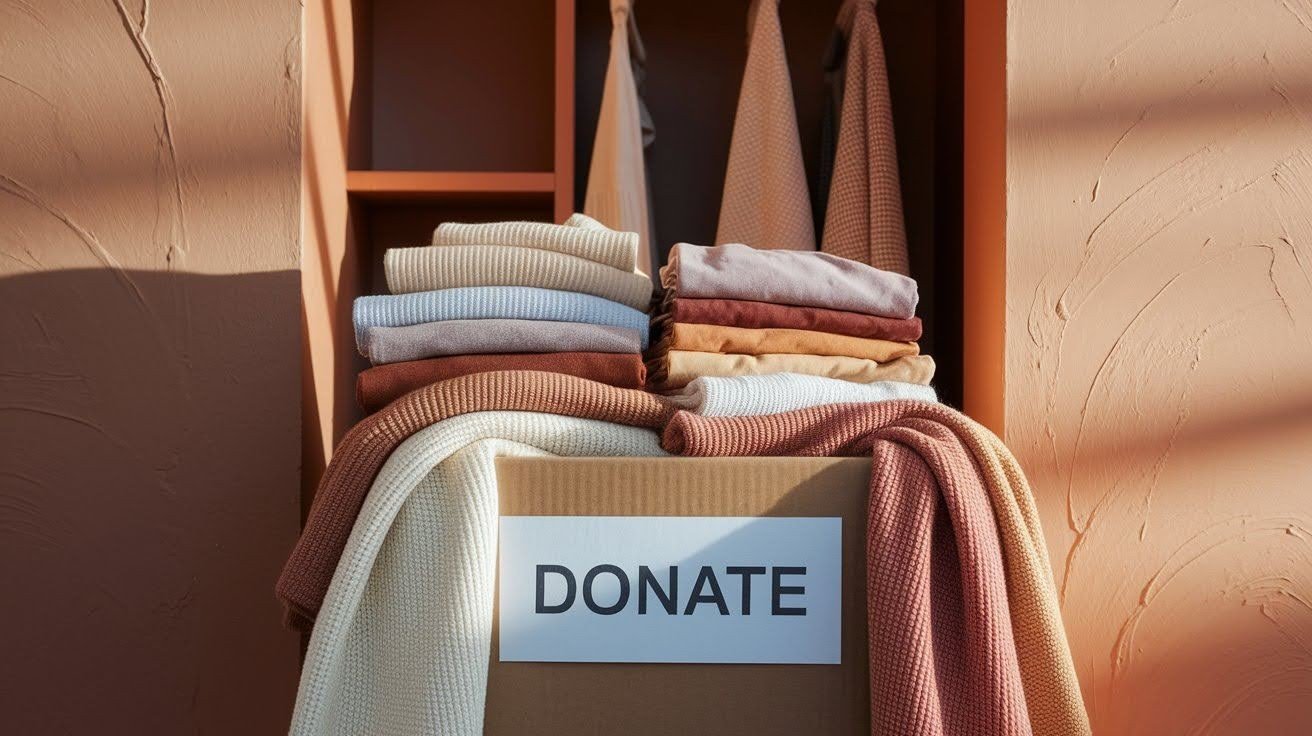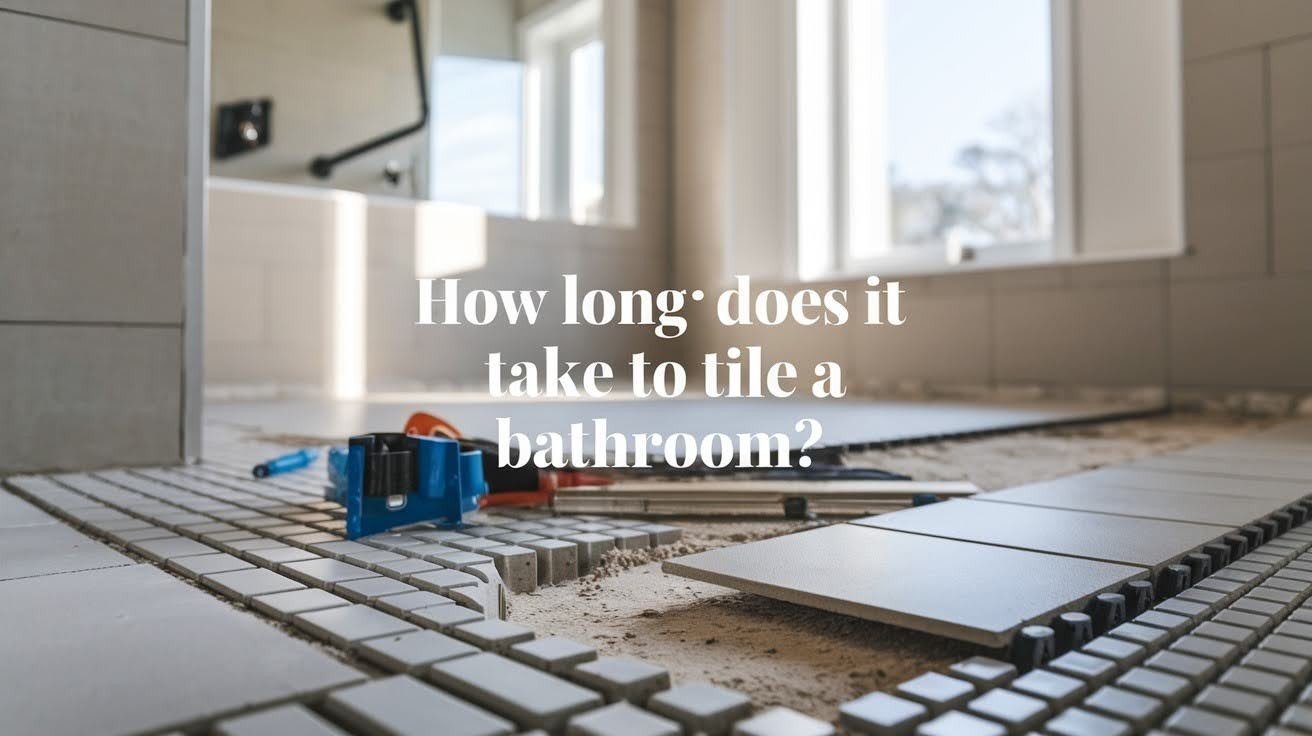Your closet is packed, yet you still feel like you have nothing to wear. Sound familiar? After helping hundreds of clients organize their homes over the past decade, I’ve seen this problem countless times. Getting rid of clothes feels harder than it should be because we attach feelings, memories, and guilt to our clothing.
But here’s the truth: a ruthless approach to decluttering will change your mornings forever. You’ll have more space, feel less stressed, and get dressed faster. No more staring at a crowded closet, feeling overwhelmed.
This guide will show you exactly how to cut through the emotions and make tough decisions about your clothes using proven methods that work.
How to Be Ruthless When Decluttering Clothes?
The secret to successful clothes decluttering lies in having clear, non-negotiable rules that take emotion out of the equation.
Start With the Golden Rule

If it’s not a “heck yes,” it’s a no. This simple rule cuts through hours of second-guessing. When you try on a piece of clothing, your gut reaction tells you everything you need to know.
Stop making excuses for clothes that are just “okay.” Your closet space is valuable real estate that should only house pieces you truly love wearing.
Dress for the Life You Have Now

Keep only what fits your current size and lifestyle. That fancy dress from three years ago doesn’t serve you if your life has changed to mostly work-from-home days.
Your clothes should match who you are today, not who you used to be or hope to become someday. Focus on what actually gets worn in your current routine.
Remove Clothes That Cause Guilt or Stress

Don’t hold on because of money spent or memories attached. That expensive jacket you never wear is costing you more in mental energy and closet space than it’s worth.
If a piece of clothing makes you feel bad about your body, your choices, or your spending, it needs to go. Your closet should make you feel good, not guilty.
Key Principles Before You Start
Setting clear intentions and boundaries before you start will keep you focused when emotions try to take over.
Get Clear on Your Why
Faster mornings, simplified style, space to breathe. Write down your specific reasons for wanting a cleaner closet and keep them visible during the process.
When you know exactly what you’re working toward, it’s easier to make tough choices. Your “why” will pull you through moments when you want to keep everything.
Accept Trade-Offs
Less stuff equals more freedom and flexibility. Every item you keep is a choice to have less space and potentially more decision-making stress.
Understanding this trade-off helps you see that keeping fewer, better pieces actually gives you more. More space, more clarity, and more confidence in what you own.
Set Boundaries
Closet space limits, category caps, and the one-year rule. Decide ahead of time how many items you can realistically house in your space.
Physical limits force good decisions. When your closet is full, something has to go before something new comes in.
Practical Strategies To Declutter Ruthlessly
Having a systematic approach removes guesswork and keeps you moving forward efficiently.
Quick Wins
Start with the obvious stuff to build momentum. Throw away anything damaged, stained, or uncomfortable. These easy decisions get you warmed up for harder choices later.
Remove duplicates and extras next. You don’t need five black t-shirts or three similar cardigans taking up space. Pick your favorites and let the rest go.
Mindset Shifts & Mental Hacks
Use a simple mantra like “I want to love everything in my closet as much as my favorite boots.” This keeps your standards high and your decisions clear.
Take photos of sentimental pieces before donating them. You keep the memory, but free up the physical space for clothes you actually wear.
Systematic Decluttering Methods
Try everything on to check comfort and fit. Clothes that look fine on hangers might feel terrible when worn. Your body is the best judge of what works.
Use the reverse hanger method or move unworn items to track what you actually use. After six months, anything that hasn’t moved gets donated automatically.
How to Maintain a Clutter-Free Closet?
Keep a donation box right in your closet for easy drop-ins. When something doesn’t fit right or you realize you don’t love it, toss it immediately. This prevents small issues from becoming big problems later.
Try a no-shopping period while you’re decluttering and for a few months after. This helps you appreciate what you already have and breaks the cycle of buying without thinking. You’ll also save money and reduce future clutter.
Use wardrobe challenges like wearing only 10 pieces for 10 days or Project 333 to build discipline. These exercises show you how little you actually need and help you identify your true favorites.
What to do in Special Situations?
Sometimes, certain clothes need extra thought before deciding their fate.
Dealing With Sentimental Clothing
Move meaningful pieces to a memory box instead of your main closet. This honors the sentimental value while freeing up daily-use space for clothes you actually wear.
What to Do With High-Value or Designer Pieces?
Decide to sell, donate, or gift expensive items, and set deadlines for selling. Don’t let valuable pieces sit unworn just because they cost a lot. Someone else could be enjoying them.
Why Decluttering Feels Hard?
Decluttering clothes is tough because they carry memories, identity, and imagined future needs.
- Emotional attachment: Clothes often remind us of special moments, like concerts, first dates, or college memories.
- Financial guilt: We hesitate to discard items we spent money on, even if they no longer fit or suit us.
- Fantasy self: Holding onto clothes for a “someday” version of ourselves, like skinny jeans or party dresses.
- Fear of future need: Worrying we might need something later, even if it rarely gets worn, adds mental clutter.
- Mental cost of clutter: Crowded closets create stress and overwhelm, outweighing the small chance we’ll ever use forgotten items.
Conclusion
After years of working with clients on closet organization, I’ve seen the life-changing results of ruthless decluttering. The benefits are real: more physical space in your home, mental clarity when getting dressed, and confidence in every piece you own. When everything in your closet fits well and makes you feel good, getting dressed becomes simple and stress-free.
Remember the core rule that makes all the difference: keep only what you love and what serves your current life. Not your past life, not your fantasy life, but the life you’re living right now.
Start small with just one category, but stay consistent. This method has worked for my clients for over ten years.
Frequently Asked Questions
How Often Should I Declutter My Closet?
Plan to review your closet every six months, ideally when seasons change. This keeps clutter from building up and helps you stay current with your lifestyle changes. Some people prefer a quick monthly check-in to catch problems early.
What Should I Do With Clothes That Are Still in Good Condition?
Donate quality pieces to local charities or shelters where they’ll help people in need. You can also sell valuable items online or through consignment shops. Consider gifting special pieces to friends or family who would appreciate them.
How Can I Stop Re-Accumulating Clothes After Decluttering?
Follow the one-in-one-out rule: for every new piece you bring home, donate one existing piece. Shop with a list and stick to it. Wait 24 hours before buying anything non-essential to avoid impulse purchases.
Is It Better To Declutter All At Once Or Slowly Over Time?
Both methods work, depending on your personality and schedule. Doing it all at once creates dramatic results and momentum, but requires a full day or weekend. Gradual decluttering fits busy schedules better and feels less overwhelming, but takes longer to see results.
How Do I Handle Clothes I Feel Guilty About Getting Rid Of?
Reframe the guilt as a learning experience about what you actually wear versus what you think you’ll wear. Remember that donating helps someone else while freeing up your space. The money is already spent – keeping unworn clothes doesn’t get it back.






